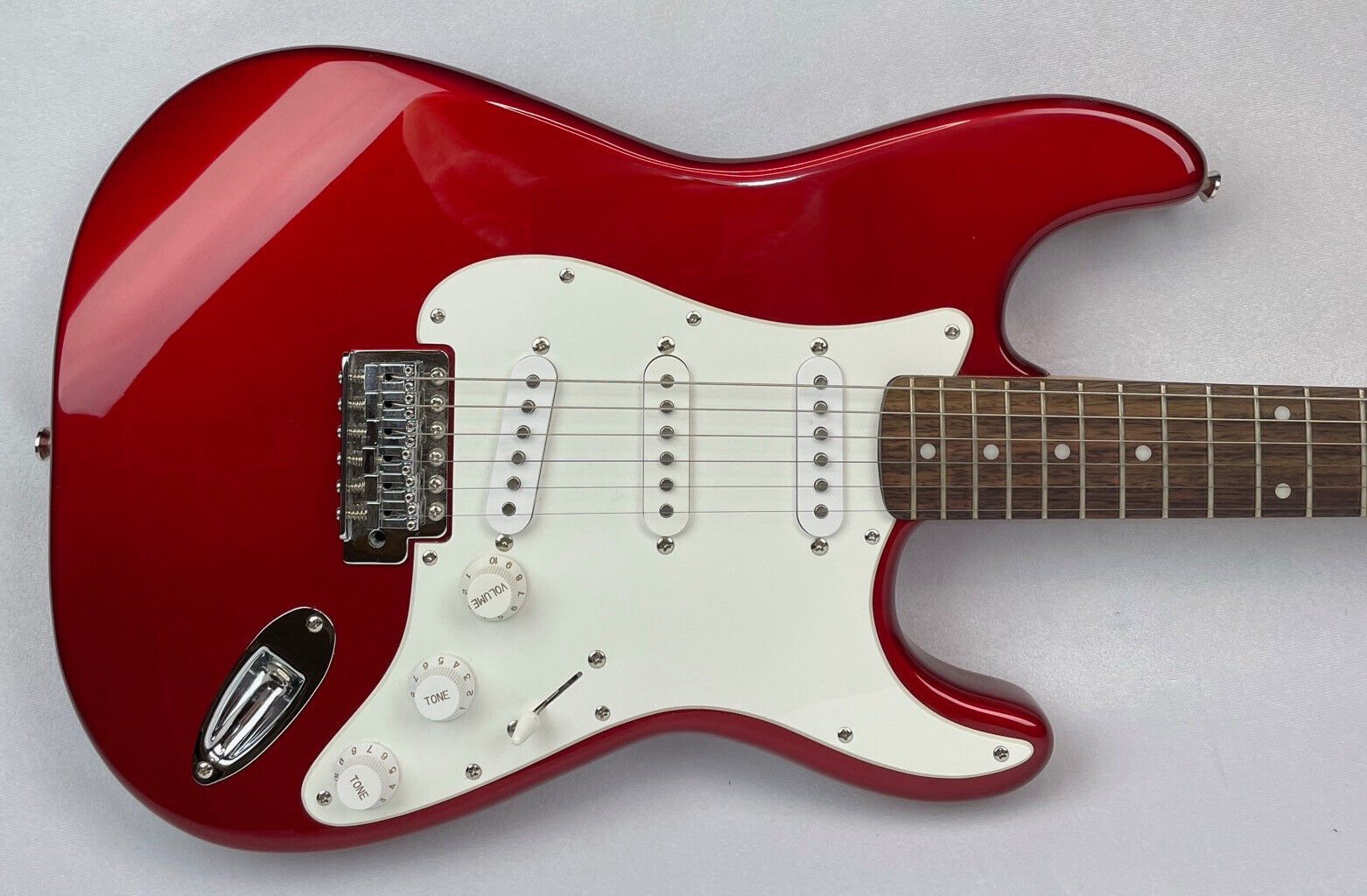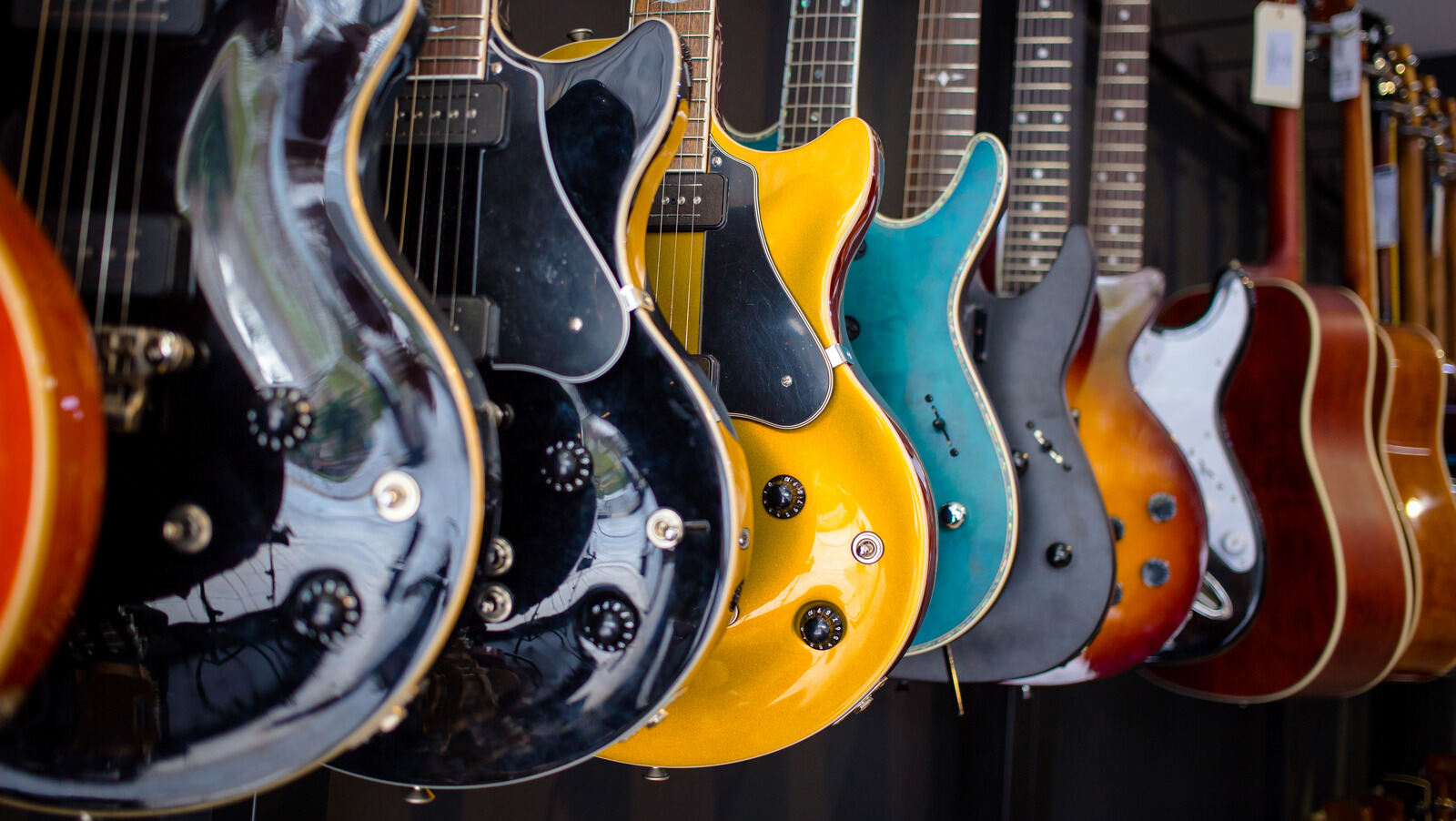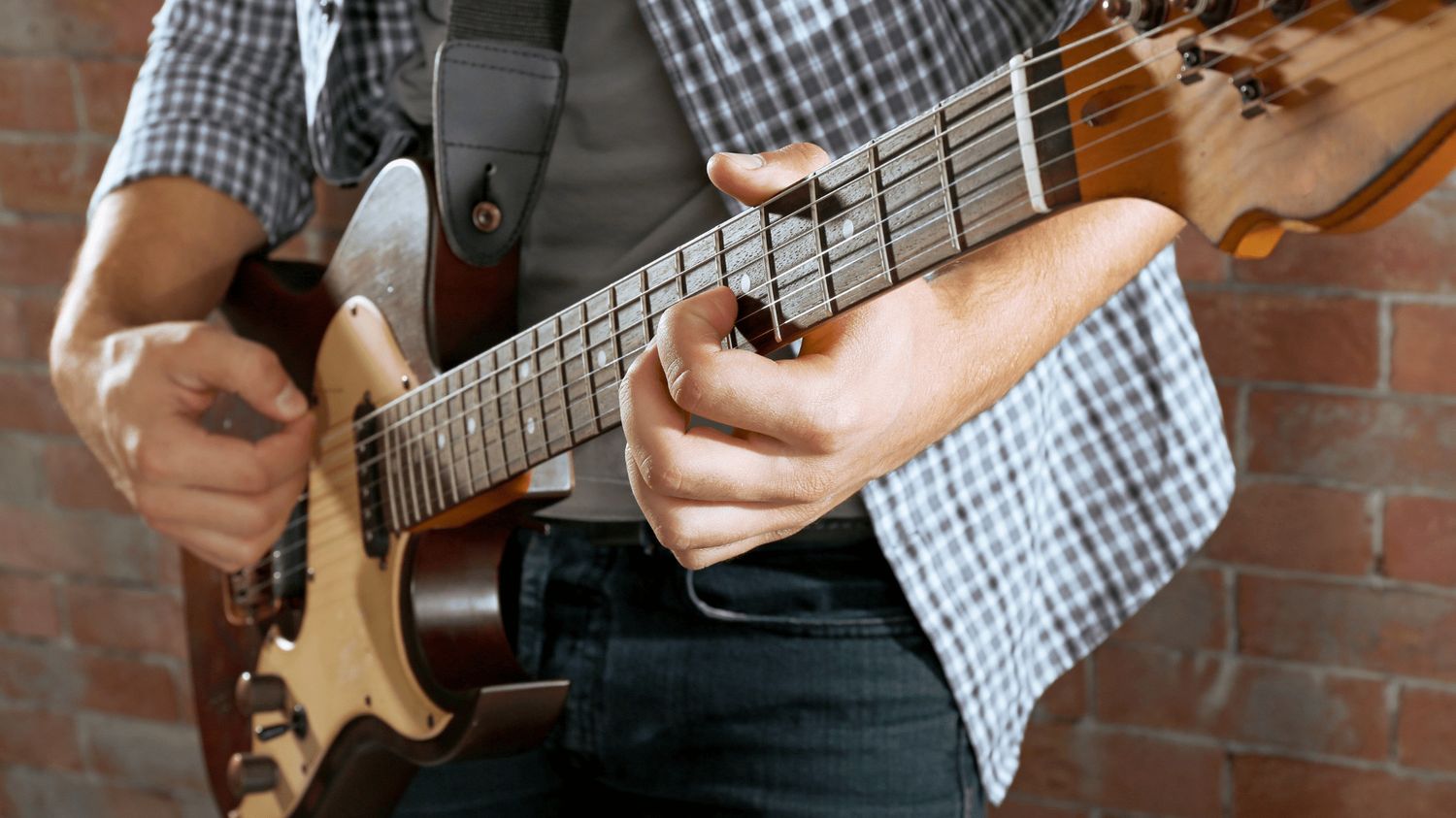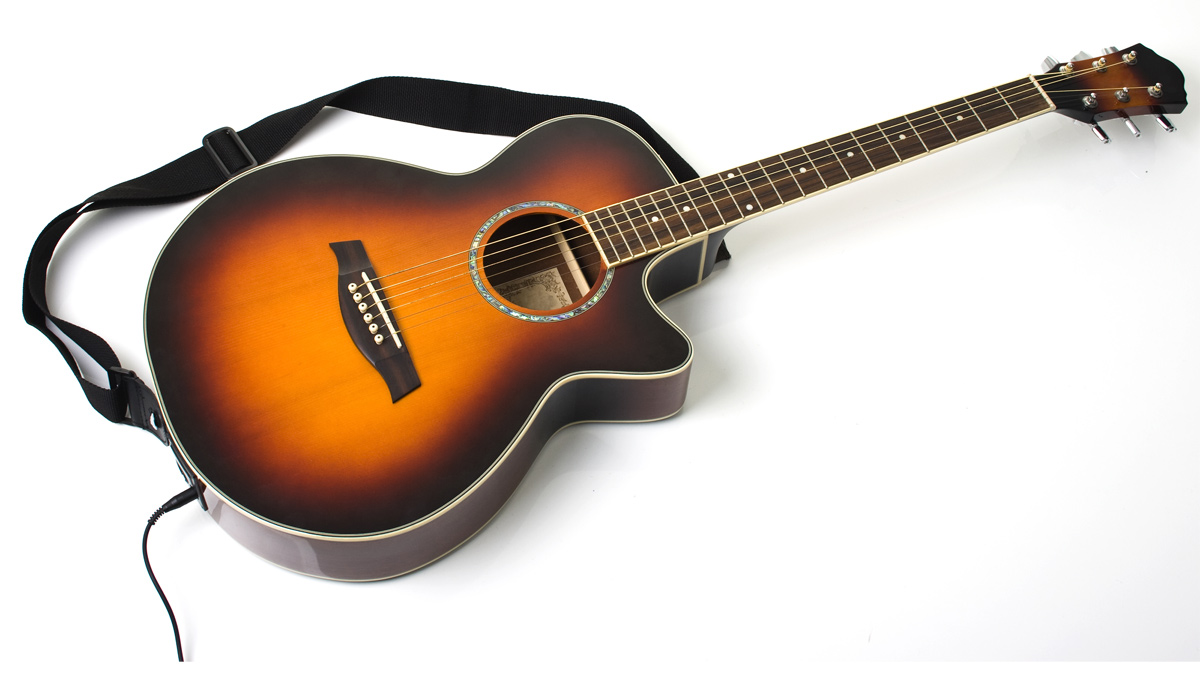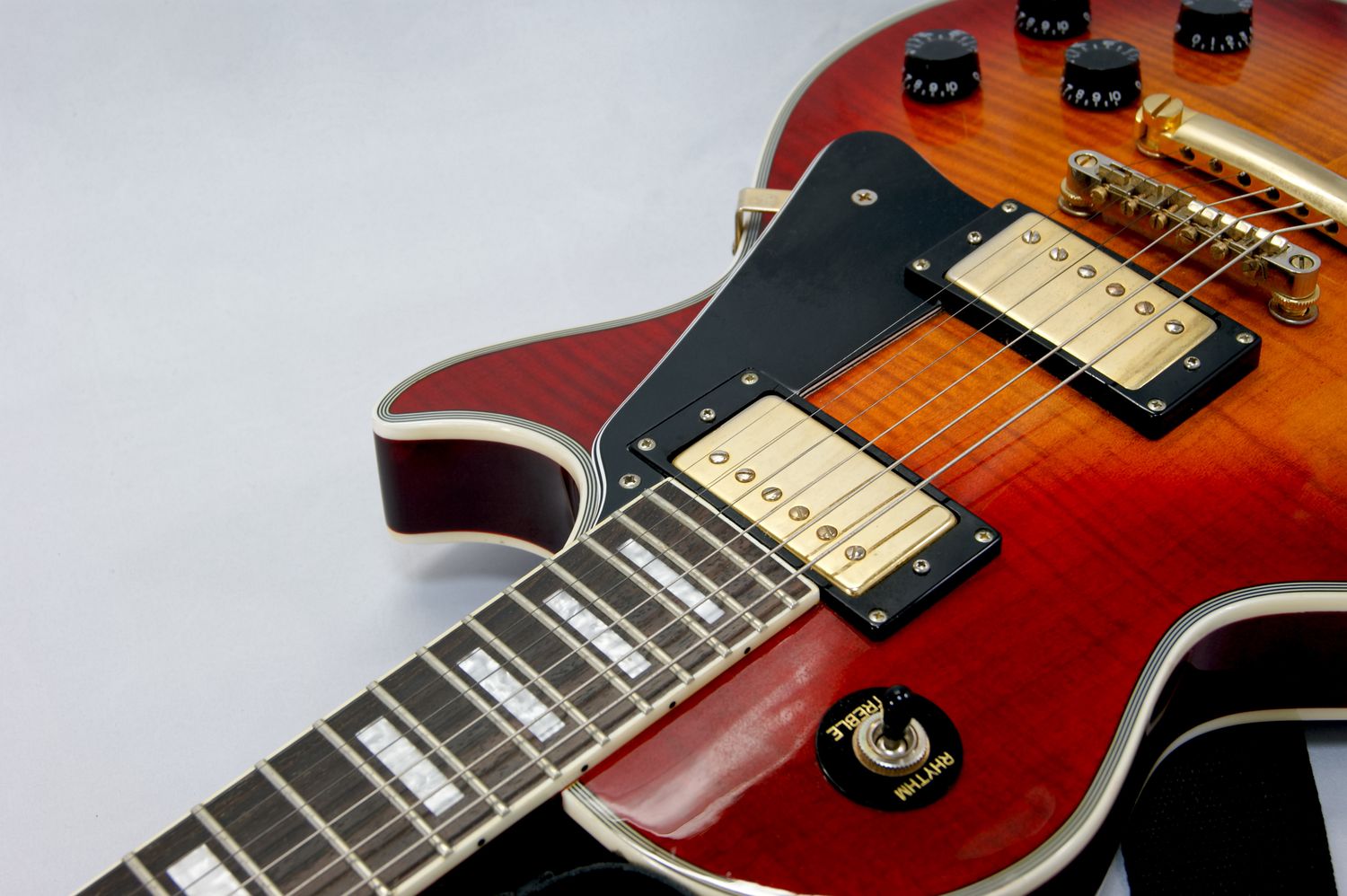Home>Production & Technology>Sound>How To Make Electric Guitar Sound Metal
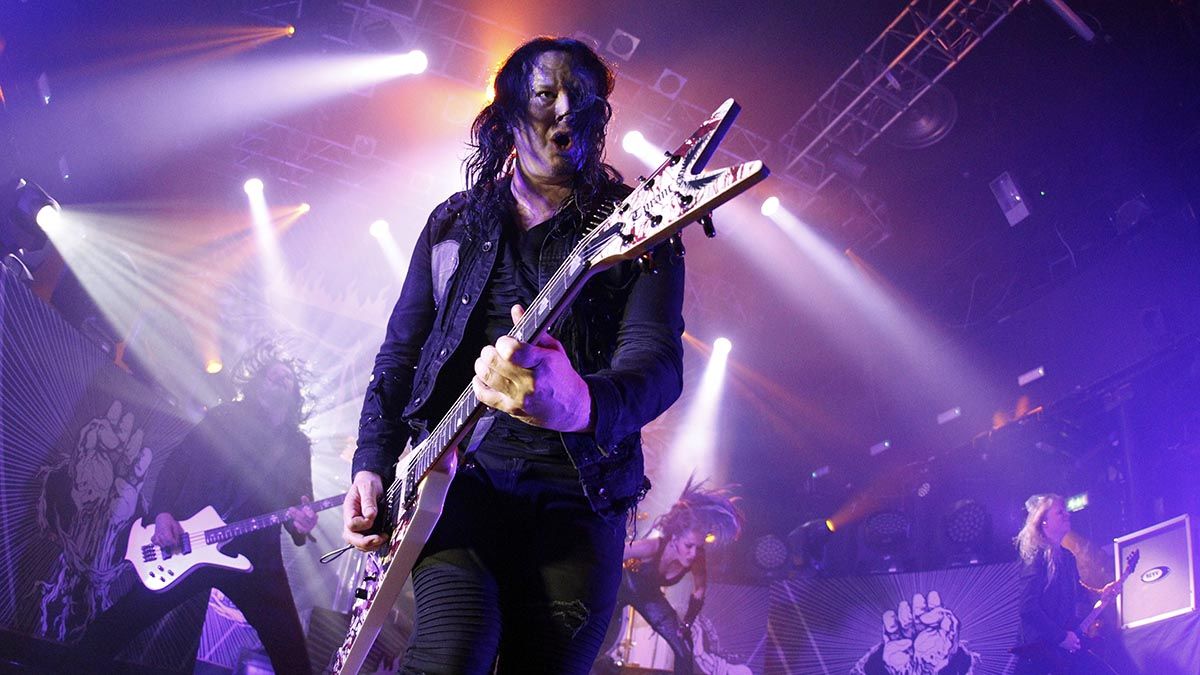

Sound
How To Make Electric Guitar Sound Metal
Modified: February 18, 2024
Learn how to make your electric guitar sound metal with these expert tips and techniques. Discover the secrets to achieving heavy, distorted tones and create powerful, aggressive sounds.
(Many of the links in this article redirect to a specific reviewed product. Your purchase of these products through affiliate links helps to generate commission for AudioLover.com, at no extra cost. Learn more)
Table of Contents
- Introduction
- Choosing the Right Electric Guitar
- Metal Tones: Guitar Pickups and Electronics
- Setting Up Your Amplifier for a Metal Sound
- Essential Guitar Effects for Metal
- Techniques for Playing Metal Riffs
- Soloing and Shredding Techniques for Metal Guitarists
- Metal Guitar Tunings
- Tips for Achieving a Heavy Metal Sound
- Conclusion
Introduction
Welcome to the world of metal guitar! Whether you’re a beginner or an experienced player looking to take your sound to the next level, this article will guide you on how to make your electric guitar sound metal. Metal is a genre known for its heavy, aggressive, and powerful sound, and achieving that signature tone requires a combination of the right gear, techniques, and knowledge.
As a guitarist, your instrument is your most important tool, so choosing the right electric guitar is crucial. The type of guitar, pickups, and electronics play a significant role in shaping your metal sound. Additionally, setting up your amplifier, using the right effects and techniques, and exploring alternative guitar tunings can greatly enhance your metal playing.
In this article, we will walk you through the process of creating a metal sound step by step. From selecting the right guitar and pickups to mastering metal guitar techniques and gear, we will cover everything you need to know to make your electric guitar roar with a fierce metal tone.
Whether you’re a fan of thrash, death metal, or djent, the techniques and strategies discussed will help you achieve the heavy and aggressive sound that defines the genre. So, grab your guitar, turn up the volume, and let’s dive into the world of metal guitar!
Choosing the Right Electric Guitar
When it comes to creating a metal sound, the choice of electric guitar is crucial. Different types of guitars have distinct tonal characteristics that can greatly affect your metal playing. Here are some factors to consider when choosing the right electric guitar for a metal sound:
- Guitar Body: The body of the guitar plays a significant role in shaping the overall sound. Solid-body guitars, such as the iconic Gibson Les Paul and the Fender Stratocaster, are popular choices for metal due to their sustain and power. They provide a solid foundation for generating heavy and aggressive tones.
- Pickups: The pickups on your electric guitar are the heart of your tone. In the context of metal, humbucker pickups are often preferred for their high output and ability to handle high-gain sounds. These pickups produce a thick and powerful sound that is perfect for heavy riffs and soaring solos.
- Guitar Neck: The neck of the guitar also plays a role in the playability of the instrument. For metal, guitars with slim and fast neck profiles are often preferred, as they allow for quick and precise finger movements. Look for guitars with thinner neck shapes, such as “C” or “D” profiles, for a comfortable playing experience.
- Tuning Stability: Given the heavy and aggressive playing style of metal, having a guitar with excellent tuning stability is essential. Look for guitars with locking tuners or a locking tremolo system to ensure your strings stay in tune, even with intense bending and dive bomb techniques.
Ultimately, choosing the right electric guitar for metal boils down to personal preference and playstyle. Experimenting with different guitars and pickups can help you find the perfect combination that suits your unique sound. Remember, the guitar is the foundation of your metal tone, so take your time to explore different options and find the instrument that inspires you to unleash your inner shredder.
Metal Tones: Guitar Pickups and Electronics
When it comes to creating the perfect metal tone, the choice of guitar pickups and electronics plays a crucial role. These components directly impact the sound and can help you achieve the heavy and aggressive tones associated with metal music. Here are some key factors to consider:
- Humbucker Pickups: Humbucker pickups are the go-to choice for many metal guitarists. These pickups are known for their high output and ability to handle high-gain, distortion-laden sounds. They produce a thick and saturated tone, perfect for heavy riffs and solos. Look for humbucker pickups with ceramic magnets for added aggressiveness and clarity.
- Active Pickups: Active pickups, such as those from brands like EMG and Seymour Duncan, are often favored by metal guitarists. These pickups require a battery to power an onboard preamp, resulting in an even higher output and a tighter low-end response. Active pickups excel at delivering the intense, articulate, and tight tones needed for heavy metal.
- Coil Splitting: Some guitars come equipped with coil splitting capabilities, which allow you to split a humbucker pickup into a single-coil mode. This feature provides more versatility, as you can achieve a wide range of tones, from the thick and saturated humbucker sound to the twangy and bright single-coil tones. It’s a useful tool for adding dynamics and variety to your metal playing.
- Tone and Volume Controls: Experimenting with the tone and volume controls on your guitar can significantly impact your metal tone. Rolling off the tone control slightly can tame any excessive brightness or high-end frequencies, while keeping the volume control at maximum can ensure a full and powerful sound. Remember to find the sweet spots that work best for your desired metal sound.
- Preamp and Equalization: Some guitars come with built-in preamps and equalization controls, which allow you to shape your tone further. These onboard electronics can boost specific frequencies, add more gain, or fine-tune the overall sound to suit your preferences. Take the time to explore and experiment with these controls to dial in your perfect metal tone.
Remember, finding the right combination of pickups and electronics is a personal journey. Different setups work for different guitarists, so don’t be afraid to explore and experiment until you find the perfect configuration that helps you unleash your metal sound. Ultimately, the goal is to find the pickups and electronics that offer the power, clarity, and aggression needed to cut through the mix and deliver that crushing metal sound.
Setting Up Your Amplifier for a Metal Sound
When it comes to achieving a killer metal sound, your amplifier is a crucial component. It’s not only about having the right guitar and pickups; the amplifier settings and configuration play a significant role in shaping your tone. Here are some tips to help you set up your amplifier for a powerful metal sound:
- Choose the Right Amplifier: If you’re serious about metal, consider investing in a high-gain amplifier specifically designed for heavy genres. Look for amps known for their tight low-end response, scooped mids, and aggressive distortion. Brands like Mesa/Boogie, Peavey, and Marshall offer excellent options tailored for metal guitarists.
- Select the Appropriate Channel or Mode: Many modern amplifiers provide multiple channels or modes that cater to different playing styles. Make sure to explore the high gain options and experiment with different channels to find the one that delivers the desired heaviness and tightness for your metal sound.
- Adjust the Gain and Distortion: Dialing in the right amount of gain and distortion is crucial for a killer metal tone. Start by setting the gain control to an appropriate level, avoiding excessive saturation that can result in muddiness. Use your ears as a guide, aiming for a balance between clarity, note definition, and aggression.
- Tweak the EQ Controls: The EQ (Equalization) controls on your amplifier allow you to shape the frequency response. For a metal sound, a popular approach is to scoop the mids, boosting the lows for a thunderous bottom end and the highs for added clarity and bite. However, be careful not to scoop the mids too much, as it can lead to a thin and weak sound. Experiment and find the EQ settings that work best for your preferred metal tone.
- Utilize the Presence and Resonance Controls: The presence and resonance controls on your amplifier can further enhance the character and responsiveness of your metal sound. The presence control adds clarity and sparkle to your high-end frequencies, while the resonance control adjusts the tightness and low-end response. Fine-tune these controls to achieve the right balance for your desired metal tone.
- Consider Using an Overdrive or Distortion Pedal: If you want to push your metal sound even further, consider adding an overdrive or distortion pedal in front of your amplifier. These pedals can add an extra layer of saturation, tighten up the low-end, and provide more sustain and aggression to your sound. Experiment with different pedals to find the one that complements your amplifier and guitar setup.
Remember, the amplifier settings can vary depending on your specific gear and the sound you’re trying to achieve. It’s essential to spend time tweaking and experimenting with different settings to find the perfect configuration for your metal sound. Don’t be afraid to crank up the volume and unleash the sonic fury that defines the world of metal guitar.
Essential Guitar Effects for Metal
When it comes to creating a distinctive and powerful metal sound, guitar effects play a crucial role. These effects can add depth, texture, and intensity to your playing, taking your metal tone to the next level. Here are some essential guitar effects for achieving a killer metal sound:
- Distortion Pedal: A distortion pedal is a must-have for any metal guitarist. It takes your amp’s natural overdrive and pushes it to the extreme, adding saturation, sustain, and raw aggression to your tone. Look for distortion pedals specifically designed for high-gain applications, as they will provide the heavy and crushing distortion required for metal.
- Overdrive Pedal: While distortion pedals are great for heavy tones, an overdrive pedal can add extra punch, clarity, and tightness to your sound. Using an overdrive pedal in combination with a distortion pedal can give you more control over your tone, allowing you to shape the level of saturation and attack. Experiment with different settings and pedal combinations to find the perfect balance for your metal sound.
- Noise Gate: Metal often involves palm-muted chugs and aggressive riffing, which can generate unwanted noise and feedback. A noise gate pedal can help control these unwanted sounds by cutting off the signal when it falls below a certain threshold. This allows for tight, precise playing while eliminating any background hiss and noise.
- Delay Pedal: Adding a delay pedal to your setup can add depth and ambience to your solos and lead lines. A short delay with moderate feedback can create a sense of spaciousness, while longer delays with increased feedback can create cascading and atmospheric textures. Experiment with different delay settings to find the right balance that complements your metal sound.
- Reverb Pedal: Reverb can bring life and dimension to your guitar sound. A touch of reverb can add a sense of space and create a more immersive and expansive tone. For metal, a plate or hall-style reverb can work well, adding depth without overpowering the heaviness of your playing.
- Wah Pedal: While not as essential as the previous effects, a wah pedal can add expressive and dynamic elements to your metal solos and leads. It allows you to shape your tone by sweeping the midrange frequencies and creating vocal-like sounds. Incorporating moments of wah into your playing can add personality and intensity to your metal sound.
Remember, while these effects are often used in metal, the choice to use them ultimately depends on your personal preference and the specific sound you’re aiming for. Experiment with different pedals, settings, and combinations to find the effects that enhance your playing and bring out the heavy, aggressive, and crushing metal tone you desire.
Techniques for Playing Metal Riffs
Metal is often characterized by its aggressive and complex guitar riffs. Developing strong rhythm guitar skills and mastering the techniques used in metal playing are essential for creating that heavy and powerful sound. Here are some techniques to help you excel in playing metal riffs:
- Palm Muting: Palm muting is a technique where you lightly rest the edge of your picking hand near the bridge of the guitar to create a muted and percussive sound. This technique is commonly used in metal to achieve tight and chuggy palm-muted riffs. Experiment with the placement of your palm to find the sweet spot that produces the desired level of muting.
- Alternate Picking: Alternate picking involves using both downstrokes and upstrokes to pick each note in a riff. This technique helps you achieve speed and accuracy, making your metal riffs sound tight and precise. Start slow and gradually increase your speed, focusing on maintaining a consistent and even picking motion.
- Downpicking: Downpicking is another essential technique in metal playing. It involves using only downward strokes to pick the strings, creating a more aggressive and powerful sound. This technique is commonly used in fast and heavy riffs, and it requires strength and control in your picking hand.
- Power Chords: Power chords are a staple in metal riffs. They are formed by playing the root note of a chord and the fifth interval, creating a strong and distorted sound. Experiment with different shapes and positions on the fretboard to create powerful and full-sounding metal riffs.
- String Skipping: String skipping involves playing notes on non-consecutive strings, creating an interesting and dynamic sound. This technique adds complexity and a unique flavor to your metal riffs. Practice string skipping exercises to develop your coordination and dexterity, allowing you to execute seamless and fluid metal riffs.
- Tremolo Picking: Tremolo picking is a rapid and continuous picking technique, where you repeatedly strike a single note or a series of notes in quick succession. This technique adds intensity and speed to your metal riffs, allowing you to create blistering and aggressive passages. Start slow and gradually increase your speed to develop control and precision.
- Sliding and Bending: Incorporating slides and bends in your metal riffs can add a melodic and expressive element to your playing. Sliding between notes or bending strings to reach certain pitches creates a dynamic and emotive sound. Experiment with different slides and bends to find the ones that enhance your metal riffs.
Remember, mastering these techniques takes time and practice. Start slow and gradually increase your speed and complexity as you become more comfortable. Experiment with different rhythms, dynamics, and articulations to develop your unique metal riffing style. With dedication and perseverance, you’ll be shredding those heavy metal riffs in no time!
Soloing and Shredding Techniques for Metal Guitarists
One of the most exhilarating aspects of metal guitar playing is the ability to shred through blazing fast solos. To become a proficient metal lead guitarist, it’s important to develop a solid foundation of techniques and skills. Here are some essential soloing and shredding techniques for metal guitarists:
- Alternate Picking: Alternate picking is crucial for fast and accurate lead guitar playing. It involves using alternate downstrokes and upstrokes to pick each note, allowing for fluid and controlled playing. Practice scales and exercises using alternate picking to build speed and precision in your playing.
- Economy Picking: Economy picking is a technique that combines alternate picking with sweeping. It involves using the same picking direction when transitioning between strings, which can increase your speed and fluidity. Incorporate economy picking into your licks and passages for smooth and efficient playing.
- Legato Technique: Legato technique involves playing notes smoothly and connectedly, using techniques such as hammer-ons, pull-offs, and slides. This technique allows you to play fast and intricate patterns with minimal picking, creating a fluid and melodic sound in your solos. Practice exercises that focus on hammer-ons, pull-offs, and legato phrasing to develop this technique.
- Tapping: Tapping is a technique where you use your picking hand to tap notes on the fretboard, creating fast and intricate patterns. This technique can produce lightning-fast runs and arpeggios, adding a flashy element to your metal solos. Start with simple tapping exercises and gradually build up to more complex patterns.
- Bending and Vibrato: Bending and vibrato add expressiveness and emotion to your solos. Mastering controlled bends and vibrato techniques can make your solos soar. Practice bending to different pitches and experimenting with vibrato styles to develop your own signature sound.
- Sweep Picking: Sweep picking is a technique used to play fast arpeggios across multiple strings. It involves using a smooth, sweeping motion with the pick to play consecutive notes in a single direction. Practice arpeggio shapes and gradually increase your speed and accuracy to master sweep picking.
- Phrasing and Dynamics: In addition to technical proficiency, focusing on phrasing and dynamics is essential for captivating metal solos. Experiment with different note durations, accentuating certain notes, and incorporating bends and slides to create memorable and powerful solos.
Remember, mastering these techniques takes time, dedication, and consistent practice. Start with slow tempos and gradually increase your speed as you build proficiency. Study and analyze the playing styles of influential metal guitarists to gain inspiration and insight into their soloing techniques. With perseverance and a commitment to honing your skills, you’ll be shredding and unleashing blistering metal solos that will leave audiences in awe.
Metal Guitar Tunings
One of the defining characteristics of metal guitar is the use of unconventional tunings. These alternate tunings provide a unique and heavy sound that has become synonymous with the genre. Here are some common metal guitar tunings that you may encounter:
- Standard Tuning: While standard tuning (EADGBE) may not be specifically associated with metal, it is still widely used in the genre. Standard tuning allows for versatility and can accommodate a wide range of metal styles, from classic heavy metal to modern metalcore.
- Drop D Tuning: Drop D tuning (DADGBE) is a popular choice among metal guitarists. By lowering the lowest string to D, this tuning provides a heavier and more aggressive sound. The lower D string adds depth and power to your riffs, making it perfect for chugging rhythms and powerful breakdowns.
- Dropped Tunings: Dropped tunings, such as Drop C (CGCFAD) and Drop B (BFBEG#C#), are commonly used in heavy genres like metalcore and death metal. These tunings offer even lower and heavier sounds, providing capable sonic foundations for crushing riffs and devastating breakdowns.
- 7-String and Extended Range Tunings: The use of 7-string guitars and extended range guitars has become prevalent in modern metal. These guitars typically have an additional low B string, allowing for extended range and lower tunings such as Drop A (AEADGBE) or even lower. These tunings provide an immense level of heaviness and depth for playing extreme metal subgenres like djent and progressive metal.
- Open Tunings: Open tunings, such as Open D (DADF#AD) or Open C (CGCGCE), are less common in metal but can be utilized to create unique and atmospheric sounds. Open tunings offer rich and resonant voicings, and when paired with gain and distortion, can produce hauntingly heavy and textured tones.
Experimenting with different tunings can inspire new ideas and help you develop your own signature sound. Each tuning has its own unique characteristics and offers different sonic possibilities. Explore these tunings and take the time to familiarize yourself with their distinct tonal qualities and possibilities. Remember to make necessary adjustments to your technique and fretboard positions when switching between tunings.
Ultimately, the choice of tuning for your metal playing will depend on your personal preference, the style of metal you’re playing, and the sound you want to achieve. Don’t be afraid to push the boundaries and try different tunings to unlock a world of heavy and powerful sounds.
Tips for Achieving a Heavy Metal Sound
Creating a heavy metal sound requires a combination of factors, from gear selection to playing technique. Here are some tips to help you achieve a heavy metal sound:
- Select the Right Gear: Choose an electric guitar with humbucker pickups and a solid-body construction for a thick and powerful tone. Pair it with a high-gain amplifier or amp modeler that can deliver the aggressive distortion required for metal playing.
- Experiment with Guitar Effects: Explore distortion, overdrive, and other effects to shape your metal sound. Experiment with noise gates to control unwanted noise and create tightness in your playing.
- Focus on Palm Muting: Master the palm muting technique to achieve that signature chunky and aggressive sound. Practice muting the strings with the edge of your picking hand to create tight and percussive riffs.
- Develop Your Picking Technique: Refine your alternate picking, downpicking, and economy picking techniques to achieve precision and speed. Practice with a metronome to build your accuracy and control.
- Experiment with Different Guitar Tunings: Explore alternate and dropped tunings to add depth and heaviness to your riffs. Lower tunings, such as Drop D or Drop C, can provide a more powerful and crushing sound.
- Work on Rhythm and Timing: Metal music relies heavily on tight rhythm and precise timing. Practice playing along with a drum track or metronome to develop your sense of timing and improve your ability to lock in with the rhythm section.
- Develop Your Soloing Skills: Take the time to refine your soloing techniques, including alternate picking, legato, and bending. Explore different scales and modes to create melodic and intense solos that complement the heaviness of your riffs.
- Listen to and Study Metal Guitarists: Immerse yourself in the music of influential metal guitarists. Study their playing styles, techniques, and tone to gain insight and inspiration. Analyze their solos, riffs, and song structures to learn from their creative approaches.
- Experiment with Dynamics: Add dynamics to your playing by incorporating softer and louder passages within your songs. Varying your playing intensity can create contrast and make the heavy parts sound even more impactful.
- Find Your Unique Sound: Experimentation and personal exploration are key in developing a heavy metal sound that is unique to you. Don’t be afraid to push boundaries, break rules, and create your own distinct style to stand out in the metal community.
Remember, achieving a heavy metal sound takes time, dedication, and a willingness to continually refine your skills. Embrace the process of experimentation, practice regularly, and never stop pushing yourself to improve. With passion, perseverance, and attention to detail, you’ll be able to unleash a crushing and powerful heavy metal sound.
Conclusion
Congratulations! You’ve now learned valuable tips and techniques to make your electric guitar sound metal. From choosing the right guitar and pickups to setting up your amplifier and incorporating essential guitar effects, you have a solid foundation for creating a heavy and aggressive metal tone.
Remember, the quest for the perfect metal sound is an ongoing journey. It takes time, practice, and experimentation to develop your own unique style and tone. Continuously explore different tunings, refine your playing techniques, and study the techniques and styles of influential metal guitarists to further enhance your skills.
Whether you’re playing blistering riffs, shredding through solos, or creating atmospheric melodies, the key is to keep pushing the boundaries and expressing your creativity. Metal is a genre that thrives on experimentation and individuality, so don’t be afraid to take risks and forge your own path.
Now, armed with the knowledge and techniques shared in this article, it’s time to plug in your guitar, turn up the volume, and immerse yourself in the world of metal. Embrace the power, aggression, and intensity that define the genre, and let your guitar scream with the fury and passion that metal demands.
So go forth, practice diligently, and ignite the stage with your monstrous metal sound. Whether you’re in a band, recording music, or simply jamming in your bedroom, embrace your inner metal guitarist and let your music shake the very foundations of the earth!


